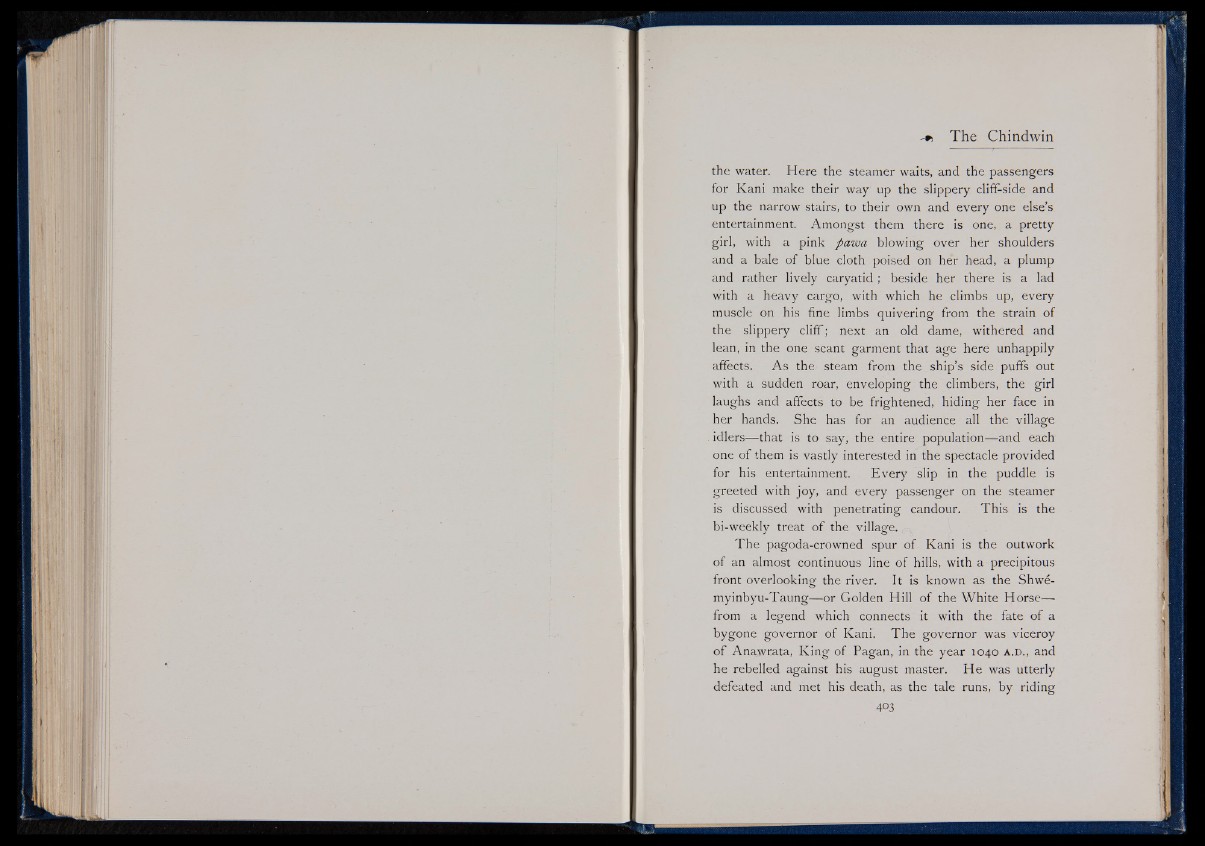
the water. Here the steamer waits, and the passengers
for Kani make their way up the slippery cliff-side and
up the narrow stairs, to their own and every one else’s
entertainment. Amongst them there is one, a pretty
girl, with a pink pawa blowing over her shoulders
and a bale of blue cloth poised on her head, a plump
and rather lively caryatid ; beside her there is a lad
with a heavy cargo, with which he climbs up, every
muscle on his fine limbs quivering from the strain of
the slippery cliff; next an old dame, withered and
lean, in the one scant garment that age here unhappily
affects. As the steam from the ship’s side puffs out
with a sudden roar, enveloping the climbers, the girl
laughs and affects to be frightened, hiding her face in
her hands. She has for an audience all the village
idlers— that is to say, the entire population— and each
one of them is vastly interested in the spectacle provided
for his entertainment. Every slip in the puddle is
greeted with joy, and every passenger on the steamer
is discussed with penetrating candour. This is the
bi-weekly treat of the village. L
The pagoda-crowned spur of Kani is the outwork
of an almost continuous line of hills, with a precipitous
front overlooking the river. It is known as the Shwe-
myinbyu-Taung— or Golden Hill of the White Horse—
from a legend which connects it with the fate of a
bygone governor of Kani. The governor was viceroy
of Anawrata, King of Pagan, in the year 1040 a.d., and
he rebelled against his august master. He was utterly
defeated and met his death, as the tale runs, by riding